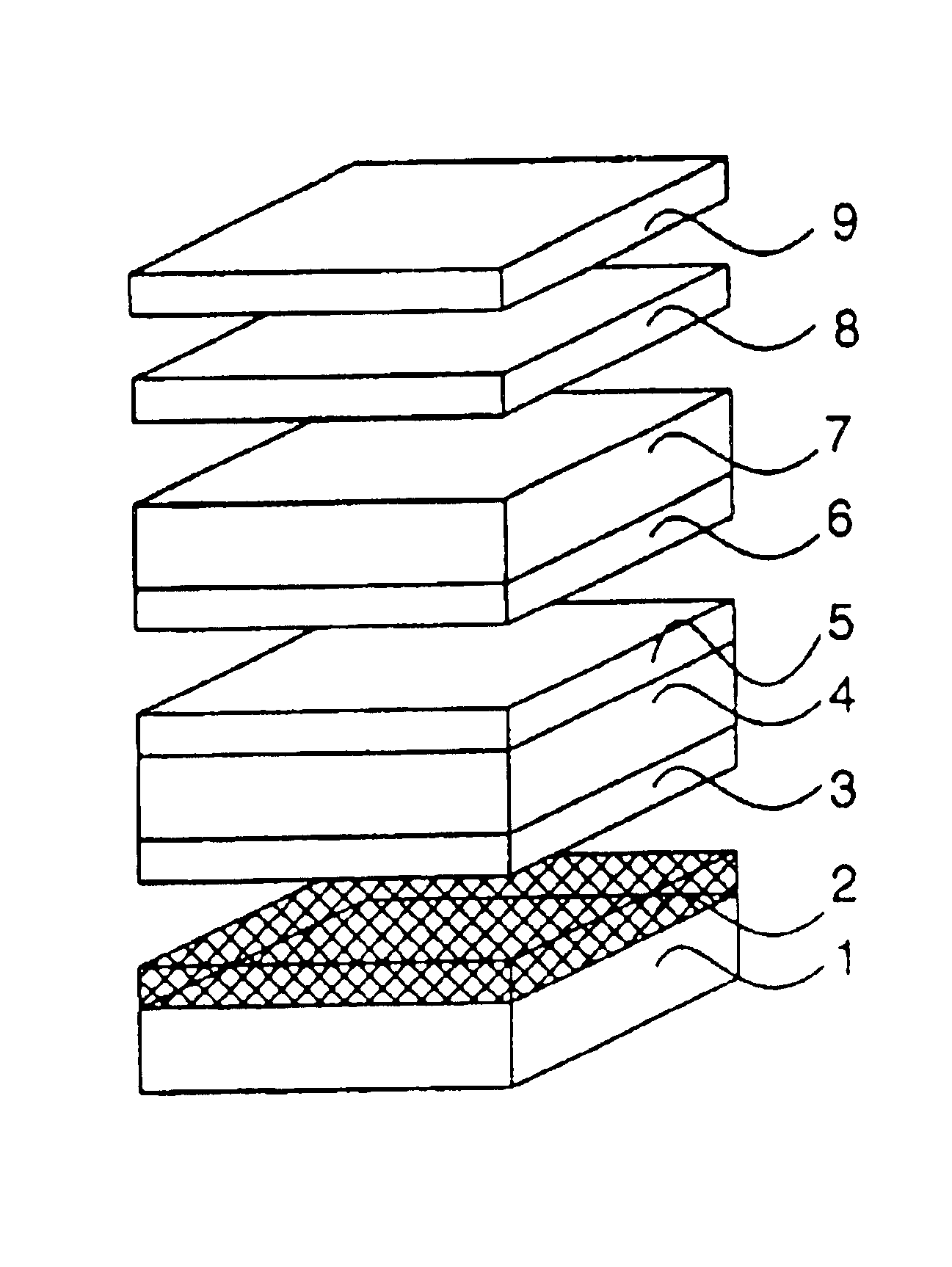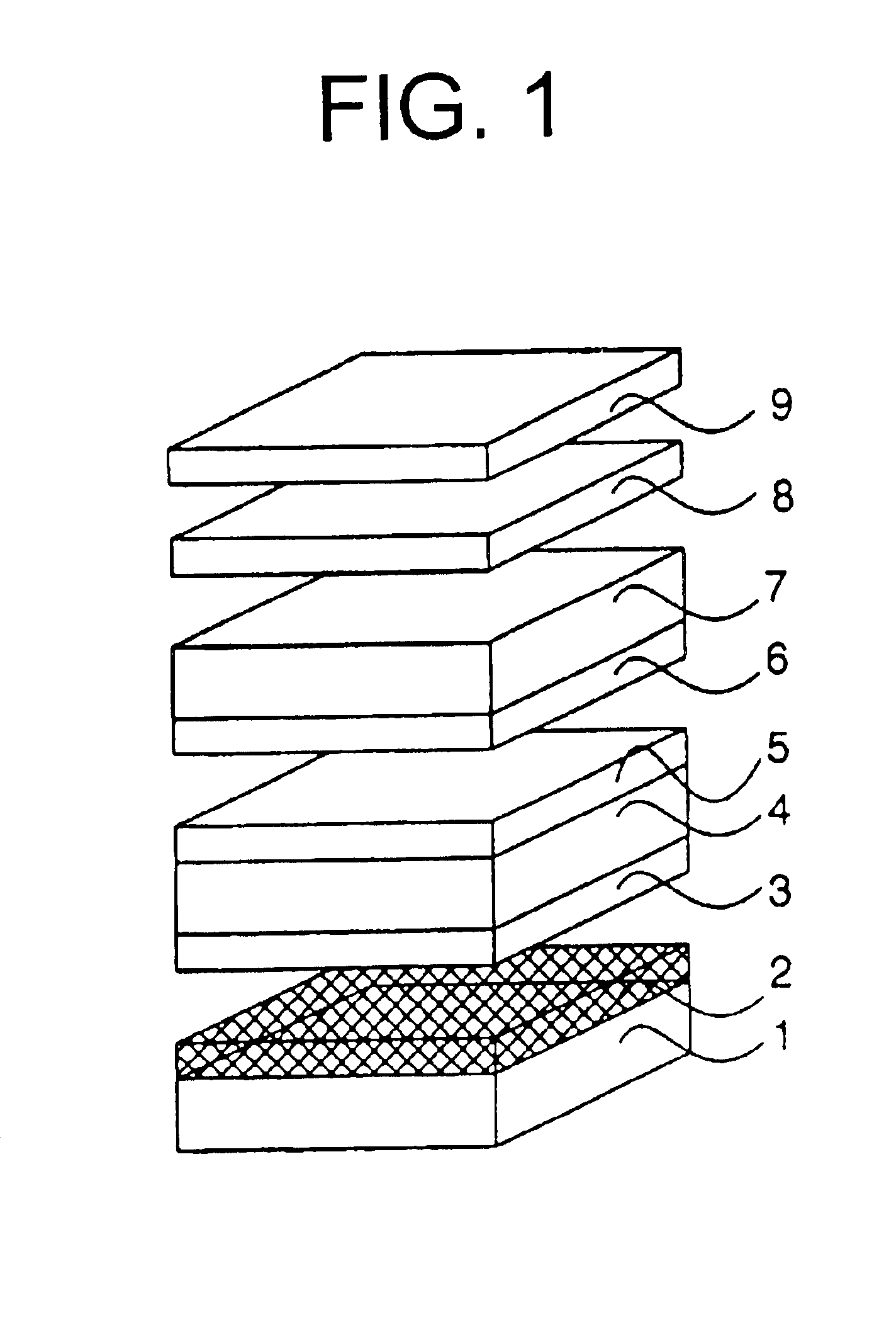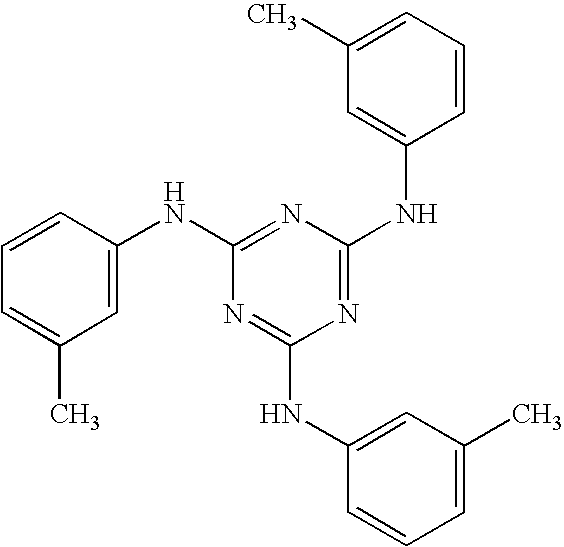Polarizing plate comprising polymer film and polarizing membrane
a technology of polarizing plate and polymer film, which is applied in the direction of polarizing elements, instruments, optics, etc., can solve the problem of insufficient contrast level, and achieve the effect of high quality
- Summary
- Abstract
- Description
- Claims
- Application Information
AI Technical Summary
Benefits of technology
Problems solved by technology
Method used
Image
Examples
example 1
(Preparation of Polymer Film)
At room temperature, 120 weight parts of cellulose acetate (average acetic acid content: 57.5%), 9.36 weight parts of triphenyl phosphate, 4.68 weight parts of biphenyldiphenyl phosphate, 3.00 weight parts of the following retardation-increasing agent, 2.00 weight parts of tribenzyl amine, 543.14 weight parts of methylene chloride, 99.35 weight parts of methanol and 19.87 weight parts of n-butanol were mixed to prepare a dope.
Retardation-increasing Agent
The prepared dope was cast onto a film-forming band, dried at room temperature for 1 minute, and further dried at 45° C. for 5 minutes. The thus-formed film contained the solvent remaining in the amount of 30 wt. %. After peeled from the band, the formed cellulose acetate film was further dried at 120° C. for 10 minutes. The film was then stretched at 130° C. parallel to the casting direction while it was let freely shrink perpendicularly. The stretched film was furthermore dried at 120° C. for 30 minute...
example 2
(Preparation of Polymer Film)
The dope prepared in Example 1 was cast on a band by means of a band-casting machine. When the solvent remaining in the formed film reached 15 wt. %, the film was peeled from the band and laterally stretched by 45% with a tenter at 150° C. to prepare a polymer film (PF-2, thickness: 40 μm).
With respect to the thus-prepared polymer film (PF-2), the retardation values were measured at 450 nm, 550 nm and 590 nm by means of an ellipsometer (M-150, JASCO COORPORATION) to find 118.3 nm, 137.2 nm and 140.7 nm, respectively. The cellulose acetate film, therefore, gave λ / 4 in a wide wavelength range.
Further, the refractive indexes were measured with an Abbe's refractometer, and the angle dependence of retardation was also measured. From the obtained data, nx (refractive index along the show axis), ny (refractive index perpendicular to the slow axis) and nz (refractive index along the depth) were determined at 550 nm to find that (nx−nz) / (nx−ny) was 1.70.
(Preparat...
example 3
(Preparation of Polymer Film)
At room temperature, 120 weight parts of cellulose acetate (average acetic acid content: 59.0%), 2.0 weight parts of the retardation-increasing agent used in Example 1, 9.36 weight parts of triphenyl phosphate, 4.68 weight parts of biphenyldiphenyl phosphate, 543.14 weight parts of methylene chloride, 99.35 weight parts of methanol and 19.87 weight parts of n-butanol were mixed to prepare a dope.
The prepared dope was cast onto a film-forming band, dried at room temperature for 1 minute, and further dried at 45° C. for 5 minutes. The thus-formed film contained the solvent remaining in the amount of 30 wt. %. After peeled from the band, the formed cellulose acetate film was further dried at 120° C. for 5 minutes. The film was then stretched at 130° C. in the direction oriented at 45° to the casting direction. The stretched film was furthermore dried at 130° C for 20 minutes, to prepare a cellulose acetate film in which the solvent remained in the amount of...
PUM
| Property | Measurement | Unit |
|---|---|---|
| wavelength | aaaaa | aaaaa |
| transmittance | aaaaa | aaaaa |
| transmittance | aaaaa | aaaaa |
Abstract
Description
Claims
Application Information
 Login to View More
Login to View More - R&D
- Intellectual Property
- Life Sciences
- Materials
- Tech Scout
- Unparalleled Data Quality
- Higher Quality Content
- 60% Fewer Hallucinations
Browse by: Latest US Patents, China's latest patents, Technical Efficacy Thesaurus, Application Domain, Technology Topic, Popular Technical Reports.
© 2025 PatSnap. All rights reserved.Legal|Privacy policy|Modern Slavery Act Transparency Statement|Sitemap|About US| Contact US: help@patsnap.com



